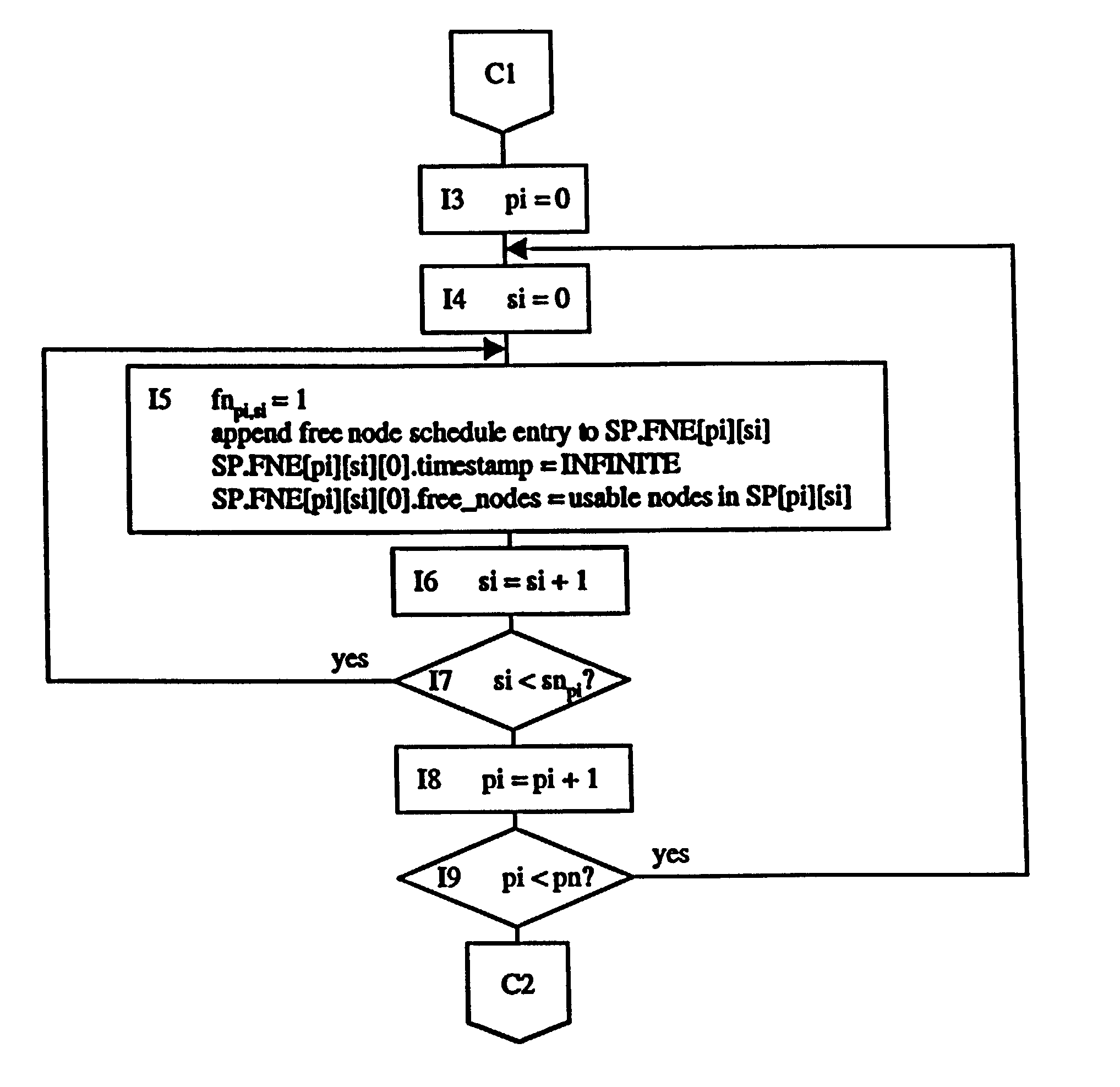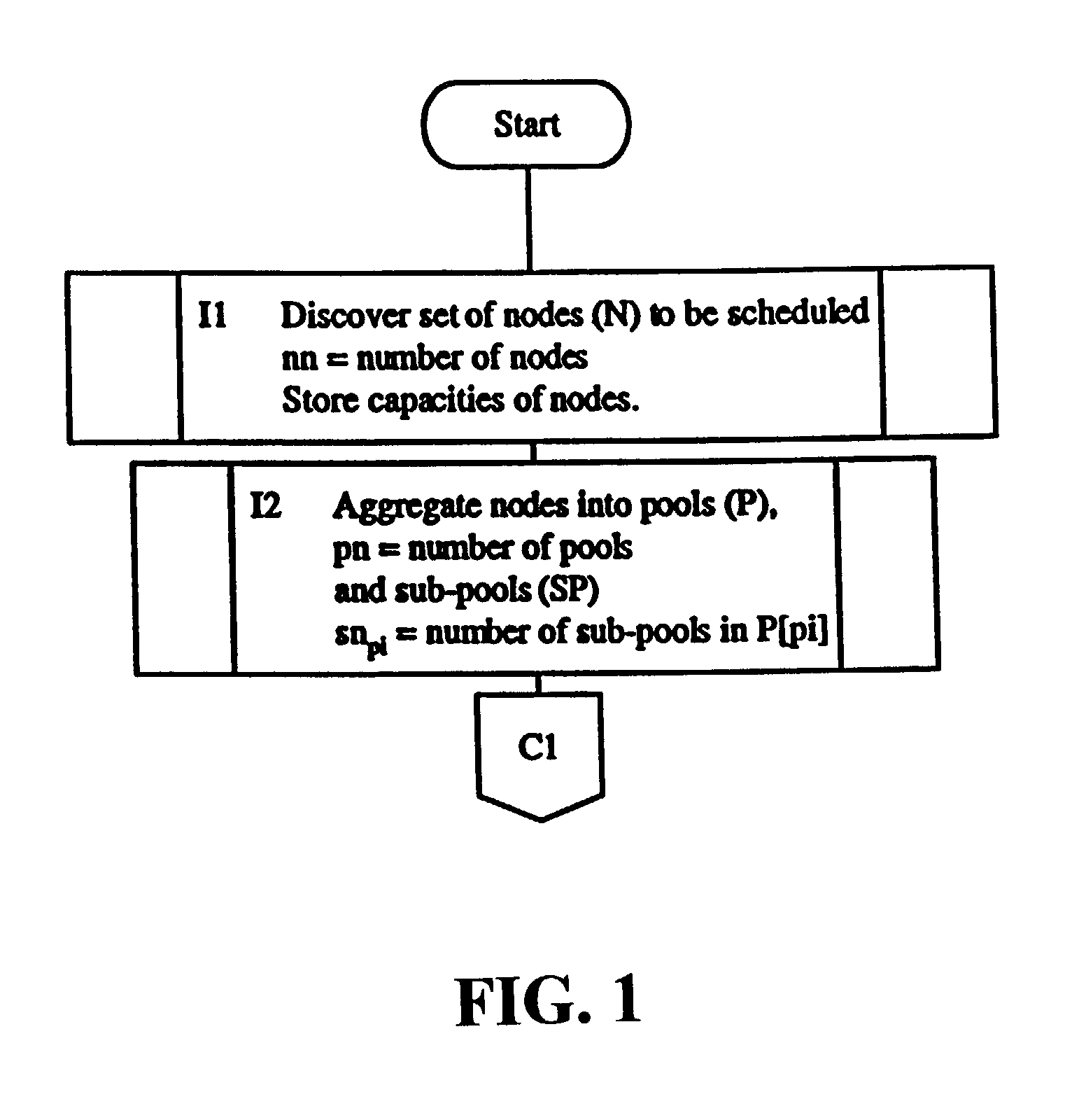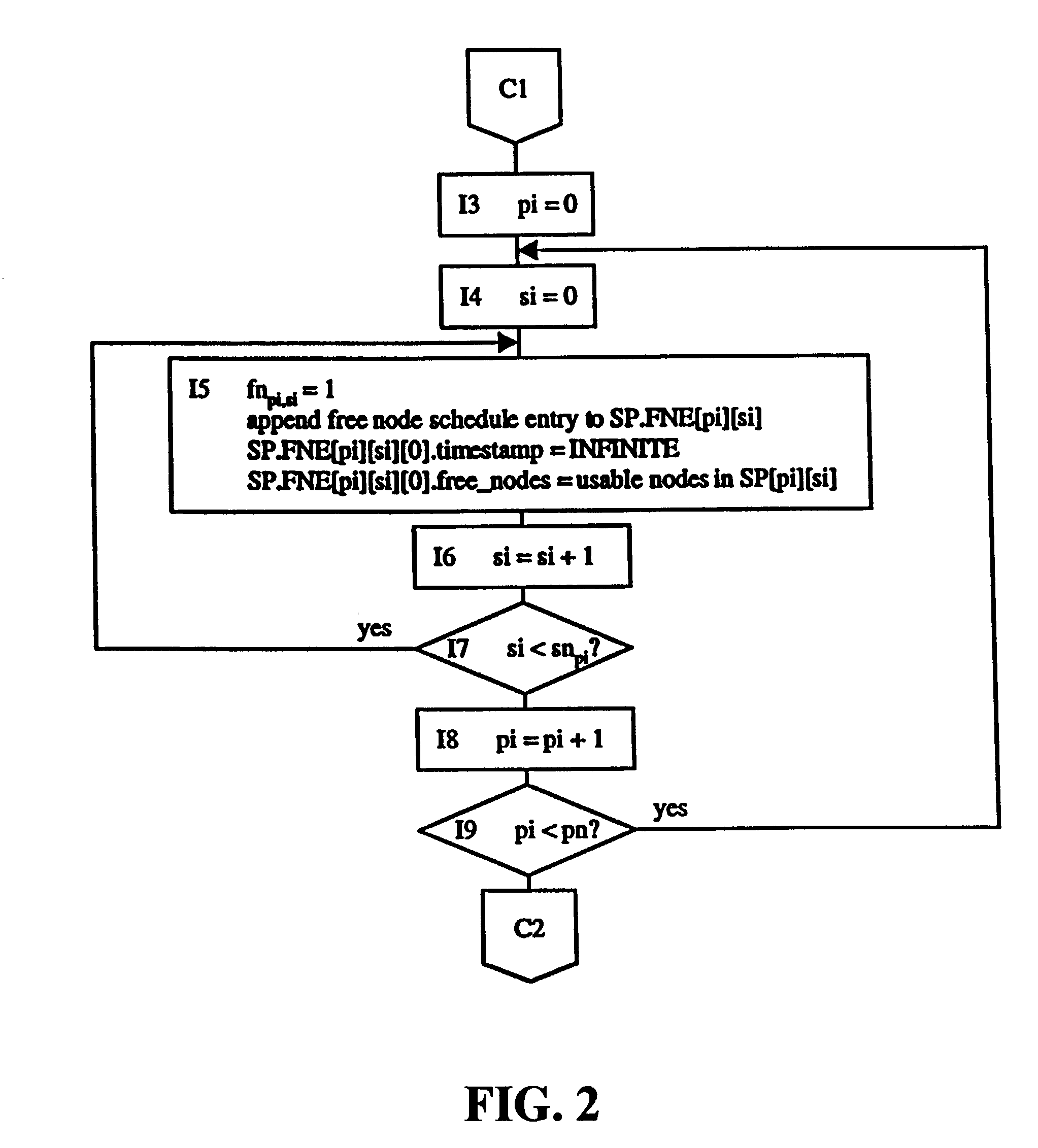Dedicated heterogeneous node scheduling including backfill scheduling
a heterogeneous multi-node computer and dedicated technology, applied in the field of dedicated heterogeneous multi-node computer system and network job scheduling and backfill scheduling, can solve the problems of current backfill scheduling technology, challenging job scheduling on parallel computer system, and limited backfill scheduling technology, so as to achieve the effect of increasing the utilization rate and throughput of dedicated heterogeneous multi-node computers
- Summary
- Abstract
- Description
- Claims
- Application Information
AI Technical Summary
Benefits of technology
Problems solved by technology
Method used
Image
Examples
Embodiment Construction
[0028]Turning now to the drawings, FIGS. 1–14 show a flow diagram of a preferred algorithm and embodiment of the method for job scheduling and backfill scheduling dedicated heterogeneous multi-node computing environments of the present invention. Generally, the present invention operates to: (a) presently schedule a job for immediate execution if there are sufficient resources available in the computing environment to schedule the job which is the highest priority job awaiting scheduling, or (b) if a job cannot be scheduled immediately, then schedule the job in priority order to run at the earliest available time range such that scheduling the job will not delay the anticipated start of any higher priority job, or (c) if result (b) is not possible, not schedule a job. Result (b) in particular provides for backfill scheduling of a lower priority job ahead of an exemplary higher priority job scheduled for future execution if the backfill scheduling of the lower priority job ahead of t...
PUM
 Login to View More
Login to View More Abstract
Description
Claims
Application Information
 Login to View More
Login to View More - R&D
- Intellectual Property
- Life Sciences
- Materials
- Tech Scout
- Unparalleled Data Quality
- Higher Quality Content
- 60% Fewer Hallucinations
Browse by: Latest US Patents, China's latest patents, Technical Efficacy Thesaurus, Application Domain, Technology Topic, Popular Technical Reports.
© 2025 PatSnap. All rights reserved.Legal|Privacy policy|Modern Slavery Act Transparency Statement|Sitemap|About US| Contact US: help@patsnap.com



